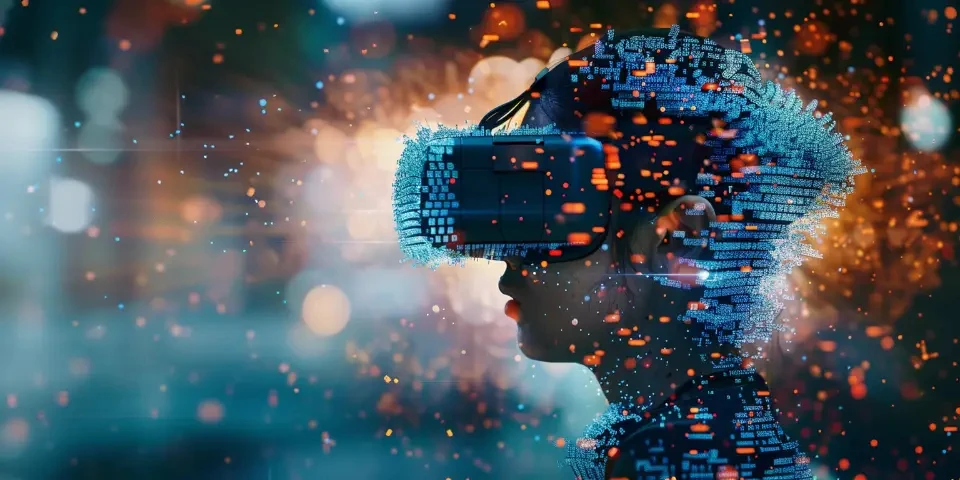Exploring Stochastic AI How Randomness Drives Innovation and Improves Decision-Making
Artificial intelligence has revolutionized various industries, from healthcare to finance, and has become an essential tool for decision-making in complex scenarios. While traditionally AI algorithms have been deterministic, the emergence of stochastic AI has introduced an element of randomness that drives innovation and improves decision-making capabilities. In this article, we will explore the concept of stochastic AI and dive into how randomness can be beneficial in AI systems.
1. Introduction to Stochastic AI
Stochastic AI involves integrating random elements into traditional deterministic algorithms, allowing for the generation of diverse and unpredictable solutions. By incorporating randomness, stochastic AI can overcome the limitations of deterministic models, enabling more creative and efficient problem-solving.

While deterministic algorithms follow a predefined path, stochastic AI algorithms introduce probabilistic elements that deviate from a fixed solution. This randomness enables AI systems to explore new possibilities and adapt to dynamic environments.
2. Generating Innovative Solutions
The introduction of randomness in AI algorithms opens doors to innovative solutions. By exploring different paths, stochastic AI can help discover unconventional approaches that were overlooked by deterministic models. This flexibility and openness to randomness foster creativity and breakthroughs in problem-solving.
For example, in the field of drug discovery, stochastic AI algorithms can generate a wide range of molecular structures, increasing the likelihood of finding novel, effective drugs. The randomness allows for the exploration of new chemical combinations and enhances the chances of identifying previously unknown therapeutic options.
3. Improving Decision-Making under Uncertainty
In real-world scenarios, decision-making often involves dealing with uncertain information. Stochastic AI offers a valuable advantage in these situations. By incorporating random elements, AI systems can generate multiple potential outcomes, considering different possibilities and their probabilities.
For instance, in financial forecasting, stochastic AI can provide a range of possible market scenarios and their associated probabilities. This information helps decision-makers assess the potential risks and rewards, enabling informed and adaptive strategies.
4. Balancing Exploration and Exploitation
Stochastic AI algorithms strike a balance between exploration and exploitation. While deterministic algorithms tend to exploit known solutions, stochastic AI explores unknown alternatives, preventing the system from getting stuck in suboptimal solutions.
By injecting randomness, AI models are encouraged to explore uncharted territories, increasing the chances of discovering superior solutions. This exploration-exploitation trade-off enhances the overall decision-making process and drives continuous improvement.
5. Overcoming Biases and Preconceptions
Human decision-making is often influenced by biases and preconceptions, which can lead to suboptimal results. Stochastic AI algorithms, by their nature, introduce randomness that helps break free from these biases and explore unbiased possibilities.
Through randomization, stochastic AI can challenge conventional thinking and prompt decision-makers to consider alternative perspectives. This ability to mitigate biases improves the quality and objectivity of decision-making.
6. Challenges and Limitations
While stochastic AI brings significant benefits, it also presents challenges. The inherent randomness can make it difficult to understand the decision-making process and trace the system's behavior. Interpretability becomes a key concern, especially in critical domains.
Additionally, incorporating randomness increases computational complexity, demanding advanced computing resources. Furthermore, the reliance on randomness introduces a level of unpredictability, which may be undesirable in certain applications.
7. Stochastic AI Tools and Frameworks
A variety of tools and frameworks are available to implement stochastic AI. One notable example is TensorFlow Probability, an extension of the TensorFlow library that provides support for probabilistic modeling and Bayesian inference. It allows researchers to incorporate uncertainty within neural networks and develop stochastic AI models.
Another popular framework is PyTorch, which offers PyTorch Geometric. This library specializes in implementing stochastic graph neural networks, enabling exploration and learning in graph-structured data domains.
Frequently Asked Questions:
Q: Is randomness always desirable in AI algorithms?
A: Randomness can be beneficial in certain situations, particularly when exploring new solutions, overcoming biases, or dealing with uncertainty. However, the context and objectives of the AI application determine whether randomness is appropriate.
Q: Does stochastic AI compromise reliability and consistency?
A: While stochastic AI introduces randomness, it is carefully controlled within defined probabilistic parameters. With appropriate evaluation and validation techniques, stochastic AI can maintain reliability and consistency while exploring alternative solutions.
Q: How is stochastic AI different from traditional machine learning?
A: Traditional machine learning algorithms rely on deterministic models, while stochastic AI integrates randomness. Stochastic AI can generate diverse solutions, adapt to dynamic environments, and improve decision-making capabilities under uncertainty.
References:
[1] Gupta, S., & Ahuja, P. (2017). A Brief Review of Stochastic Artificial Intelligence Techniques. Procedia Computer Science, 122, 537-544.
[2] Neil, D., Pfeiffer, M., & Liu, S. C. (2016). Stochastic SuperSpike: Deep Learning with Stochastic Spiking Neural Networks. arXiv preprint arXiv:1601.07140.
Explore your companion in WeMate